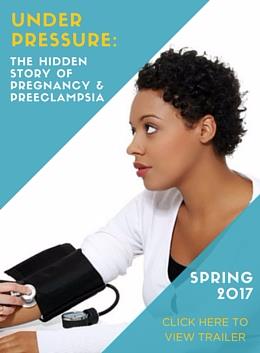There are many conversations had between an expectant mother and her prenatal care provider — for the most part, these are positive in nature and revolve around ensuring the health of both the patient and her unborn child. However, for every positive conversation, there is one a bit heavier in subject matter, one often discussed and debated amongst the medical community, between a woman and her partner, and doctor to patient — the screening and diagnosis of fetal genetic disorders and which course of action be followed.
All parents want the best reassurance for their pregnancy and to protect their unborn to their greatest capability. What is imperative is that a woman understands her options concerning prenatal testing and the risks and benefits inherent in each. In most cases, a woman has elected for testing after discussion with her provider, secondary to a sonogram that presented concerns indicative of an issue, or when another factor, such as familial or maternal medical history is in play.
While prenatal testing has been in practice for decades, Non-Invasive Prenatal Testing (NIPT) is a relatively new offering on the landscape; unlike invasive procedures like amniocentesis or chorionic villus sampling (CVS), NIPT carries no risk of miscarriage or harm to the unborn child. Through a blood sample taken from the mother, NIPT technology detects free-floating fetal DNA and analyzes it for a number of chromosomal conditions, such as Down syndrome. Still in its infancy, its use has mostly been promoted for women who are deemed “high risk,” examples of which include situations where the mother is 35 or older, a sonogram that reveals a fetal abnormality, genetic screening tests having presented concern, or in cases of prior pregnancies with a genetically-affected child.
What seemingly differentiates NIPT recently from other prenatal tests is the PERCEIVED inference that it’s DIAGNOSTIC in nature, providing conclusive results equivalent to that of invasive procedures like CVS or amniocentesis, with just the ease of obtaining a vial of maternal blood. This in fact is not the case — NIPT is a SCREENING test being marketed as having approximately 99 percent accuracy in detecting genetic abnormalities equivalent to results gleaned from invasive diagnostic procedures.
Several controversies have arisen with the entrance of NIPT on the playing field. Among them, issues with accuracy — the findings of an increased incidence of false positive results indicating the fetus has a problem, when in fact none exists, maternal weight affecting the interpretation of testing results, and in addition, that the test is less accurate and effective in detecting other specific genetic disorders. To date, NIPT has not been subjected to the screening and approval of the Food and Drug Administration (FDA).
It should be noted that NO PRENATAL TEST — whether screening or diagnostic in nature —confers 100 percent accuracy, and that ALL have their advantages, as well as their limitations. So herein lies the rub: NIPT, along with other prenatal genetic tests, are NOT regulated; they fall under the title of Laboratory Developed Tests (LDTs). LDTs historically experienced oversight by the Centers for Medicare and Medicaid through set standards imposed by the Clinical Laboratory Improvement Act (CLIA). When CLIA came into being in the 1980s, genetic testing was in the early stages of its development. Fast forward to current day, 30-plus years later, where the study of the human genome — and all that entails — is the new frontier in medicine, the novel paradigm for all aspects of future health care. As technology in the realm of genetics advances, specifically speaking towards prenatal diagnosis, a number of regulatory initiatives appear to be on the horizon. A Genetic Workgroup (GW) under CLIA has presented a number of recommendations concerning the oversight of LDTs to the FDA, based on concerns presented by physician and patient advocacy groups.
Now to the real conversation at hand — when all is said and done, the bottom line is better education need be had of the limitations and benefits of these new testing modalities; this will be a continual process as more technological advances in prenatal genetic testing present themselves. I believe a three-tiered approach to prenatal diagnosis should be initiated.
First, for the companies promoting NIPT — more education for providers should be offered to ensure that a working knowledge of the test’s benefits and limitations are clear; results should be provided with patient specific risks.
Secondly, for the providers — know that NIPT is a screening test, and abnormal results should be confirmed by a diagnostic test — like CVS or amniocentesis. Until a definitive course of action exists for oversight and standardization by regulatory agencies, and in order to better navigate the prenatal genetic waters, as a start, genetic counseling should become a ROUTINE aspect of prenatal care as opposed to the referral-based system we currently operate within. If NIPT is offered to a patient, she should have genetic counseling BEFORE and AFTER the test, to ensure complete understanding of the situation at hand and to have viable options offered before a premature decision for possible pregnancy termination is considered.
Lastly, I believe that research should be undertaken to evaluate the outcomes with NIPT technology — specifically as it relates to the false positive results — enhancing accuracy of testing of specific genetic abnormalities.
So, to NIPT or not to NIPT? That is the question. For the expectant mom, it ultimately depends on a number of factors — adequate genetic counseling, knowledge of the specific clinical issue at hand, as well as ethical and religious preference. For medical peers, and those involved with LDTs in the meantime, we await word from the FDA and other regulatory agencies.





